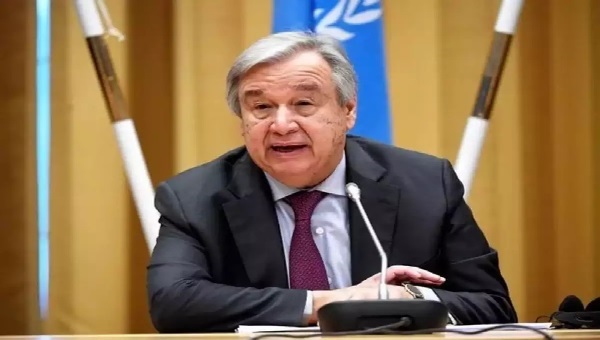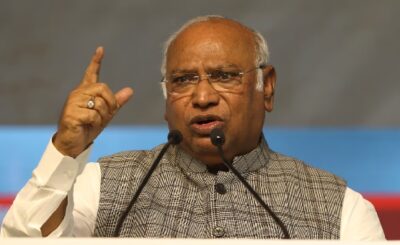Seeks quick action on climate change
Dubai, Dec 3:
Warning of a potential catastrophe in the Himalayas where the glaciers are melting at an alarming rate, UN chief Antonio Guterres on Saturday said the ongoing annual climate talks here must respond to the needs of the developing nations, especially the vulnerable mountain countries that need urgent help.
Almost 240 million people depend on the glaciers and 10 major rivers, such as Indus, Ganga, and Brahmaputra, originating in the Himalayas. Another billion people living downstream of these rivers across eight countries, including India, are also dependent on the glacier-fed rivers.
Addressing a meeting with mountain countries at this year’s Conference of Parties (COP28), UN Secretary-General Guterres emphasised that nearly a third of Nepal’s ice had vanished in just over 30 years, and it was directly linked to greenhouse gas pollution that heats the planet.
Guterres, who visited Nepal, including the Everest region, in October last week, called for developed countries to clarify the delivery of $ 100 billion and produce a plan to double adaptation finance to $40 billion a year by 2025.
But those sums are dwarfed by the scale of what’s needed, he said and advocated for reform in International Financial Institutions (IFIs) and Multilateral Development Banks (MDBs) to better cater to the needs of developing countries like Nepal.
So, we need the outcome of this COP to call for reform of the IFIs so that they reflect today’s world and are far more responsive to the needs of developing countries and for reform of the business models of the MDBs so that they can leverage far more private finance at reasonable cost to the developing countries, he told the gathering.
He said unless there is a change in course, a catastrophe can be unleashed.
The glaciers could disappear altogether. That means massively reduced flows for major Himalayan rivers such as the Indus, the Ganges and the Brahmaputra. Deltas decimated by saltwater, Guterres said.
The Secretary-General highlighted the alarming pace at which the glaciers were disappearing, causing devastating impacts on local communities. The mountains are crying out for help, and COP28 must respond.
Guterres attended the high-level roundtable with Nepal Prime Minister Pushpa Kamal Dahal ‘Prachanda’, and other heads of state and delegations.
The roundtable followed the recognition given to the mountains in the COP28 President’s Opening Plenary, which mandated the issue be taken up under the Nairobi work programme.
Addressing the G77 plus China session, which also includes India, the UN chief urged the bloc to make this year’s conference a game changer with maximum ambition to reduce emissions and on climate justice to benefit developing countries and their populations.
This COP can win with a double objective: maximum ambition on mitigation and maximum ambition in relation to climate justice, namely taking into full account the interests of developing countries. What we must avoid at all costs is a compromise based on minimum ambition on mitigation and minimum ambition on climate justice, he said.
Because developing countries would be losing twice, would be losing because there is no climate justice and be losing because without effective mitigation the dramatic impacts of climate change will be [suffered] essentially by vulnerable populations in the global South, he added.
The roundtable followed the International Centre for Integrated Mountain Development’s (ICIMOD) submission to Friday evening’s high-level event on the Warsaw International Mechanism on Loss and Damage convened by the UNFCCC Adaptation Division.
Izabella Koziell, ICIMOD Deputy Director General, stated the urgent imperative to prioritise the Hindu Kush Himalaya for Loss and Damage compensation.
Koziell called for rapid scaling up of funding to understand rapid and slow onset events to help the vast population sizes exposed to these events (240 million in the mountains and a billion downstream) adapt, and to compensate communities for losses and damages.
A 2017 study by ICIMOD has established that even when the world manages to maintain the global temperature rise average at 1.5 degrees Celsius, there will be a rise of 2 degrees Celsius or more in the Himalayan region by the end of the century.
Nearly 1,00,000 delegates from 198 countries are participating in the global conference, which commenced on Thursday and will run through December 12.








